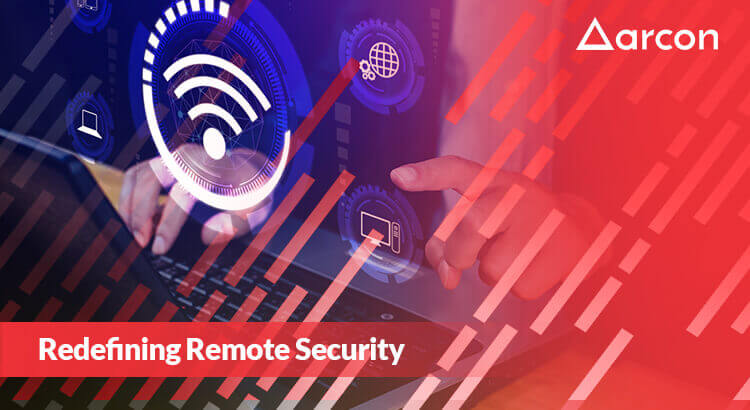Brief Background
Many organizations manage their IT operations not just with their internal end-users, but also with external users such as third-party vendors, partners, contractors, technicians, or other external IT staff. Quite often the organizations do not have a choice but to allow the external users to access critical systems for essential business functions that include remote privileged operations. Such scenarios are quite predominant in the post-pandemic era and thus security concerns have proliferated.
- Who is accessing the business-critical database?
- Why is the user accessing it?
- When did the user access it?
- How long did the user access?
- Does the user access it remotely regularly?
… and the questions go on. Such questions linger lots of doubt and discomfort in the minds of the IT administrators because these users often use their own personal endpoint devices, that are not (or may not be) compliant with the organization’s IT security policies. This doubles the security concerns, especially if the remote user is a privileged user.
Now, how does the security is compromised?
The malicious actors always consider remote privileged users with unmanaged devices as their prime targets to compromise privileged credentials and breach confidential data. On worse conditions, they can even compromise those devices to install dreadful malware and look for more privileged credentials to stealthily access other enterprise assets. Inadequate or bad privileged access management practice is another cause behind such untoward incidents.
The strong reasons behind remote security compromise are:
- No password policy and no vaulting of critical credentials
- Weak or inadequate authentication mechanisms
- Unmonitored and unmanaged devices
VPN-less approach for Secure Remote Access
The remote security approach of many global organizations took a different form in the post-pandemic times. Most inbound connections that used to originate at their employee’s home networks, or other remote locations started to be considered as ‘risky’ because the malicious actors turned active to breach those. There are different technologies that provide security for the users working remotely such as endpoint security, VPN (Virtual Private Network), NAC (Network Access Control), SSO etc. However, none can be considered as a comprehensive one that can address all the challenges that arise from remote access. ARCON’s Global Remote Access (GRA), in this regard, has been acknowledged by global SRM (Security and Risk Management) leaders for its holistic approach towards remote security. ARCON | GRA provides security to enterprise IT infrastructure along with maintenance and support in the most secure way without the hassles of implementing VPNs or any other additional installations (which is more typical). It just allows IT administrators to establish a secure remote desktop connection and helps end-users control their own systems remotely.
ARCON’s Global Remote Access (GRA), in this regard, has been acknowledged by global SRM (Security and Risk Management) leaders for its holistic approach towards remote security. ARCON | GRA provides security to enterprise IT infrastructure along with maintenance and support in the most secure way without the hassles of implementing VPNs or any other additional installations (which is more typical). It just allows IT administrators to establish a secure remote desktop connection and helps end-users control their own systems remotely.
Moreover, ARCON | GRA is an automated tool which is why the time taken in raising requests for privileged rights (through traditional methods) by end-users is zeroed down. This privilege elevation happens in a secure manner and enhances the enterprise identity lifecycle management. From an administrative perspective, it allows enterprise IT security admins to control the end-users’ systems/ applications remotely and help them to elevate admin rights, grant permissions, or change of credentials, in secure manner.
Above all, ARCON | GRA is built on a Zero trust security framework which elevates the process of identifying and preventing anomalous users from doing anything in the IT ecosystem. Some distinctive benefits of this tool are:
- It removes data breach possibilities by revoking unnecessary and risky ‘always-on’ privileges immediately after the completion of any assigned task because it follows the principle of ‘least privilege’ and prevent excessive standing privileges.
- With this, the IT administrators can remotely elevate access rights of the end-users temporarily based on requirements without sharing the credentials, that ensures security of the IT assets.
- It provides real-time monitoring on the users and creates video logs of every remote session happening in the enterprise network and thereby helps in constant session analysis. It also generates reports of all remote activities performed on each system.
- It offers unified governance framework through rule and role-based access to the critical systems (through granular level controls)
- It ensures administrative ease with a dynamic dashboard that offers complete visibility of the remote users, their remote sessions and status of those sessions. With this holistic view, the administrators can even control data transfer by accepting/ rejecting it.
- It helps organizations to follow the global regulatory compliance requirements round the clock.
Conclusion
Remote Security concerns are going to escalate in the coming days considering the trends of hybrid work environment and flexible working hours. A robust and enterprise-level remote access security tool like ARCON | GRA helps organizations to secure their confidential business assets by authorizing and authenticating remote users with their devices anywhere, anytime.

